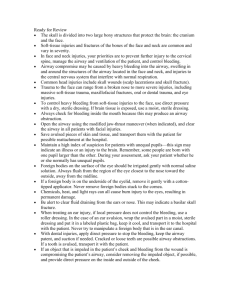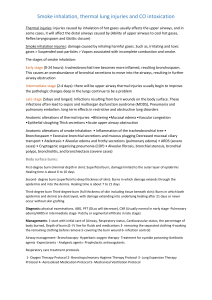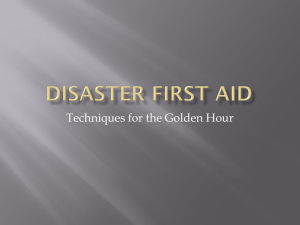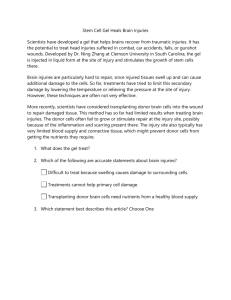RSI Quick Facts PowerPoint - San Juan Island EMS and MedEvac
advertisement
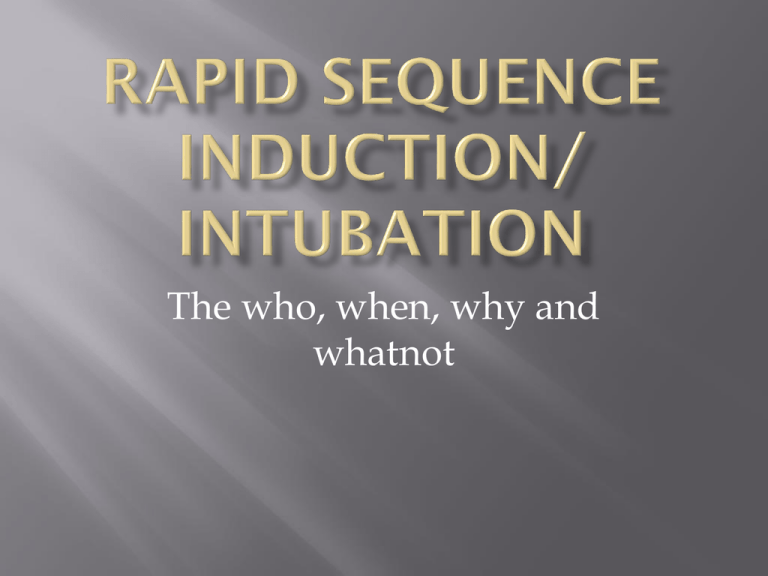
The who, when, why and whatnot “A man’s got to know his limitations” Dirty Harry The patient CANNOT MAINTAIN their own AIRWAY Intoxicants Head injury Neurological event Altered level of consciousness There is an increased potential for ASPIRATION • Altered level of consciousness • Problem with the airway/bleeding/vomiting The patient cannot effectively VENTILATE • Asthma • COPD • Neurological cause • JPFROG The patient CANNOT OXYGENATE themselves • Pulmonary edema • Pneumonia • ARDS • Toxic- cyanide, CO Things that will get WORSE and cause TROUBLE • Inhalation injury that swells • Caustic ingestion • Anaphylactic airway • Uncontrolled airway bleeding (surgical?) • Septic patients • ICH • High degree C spine fx • Uncooperative trauma patients with injuries The enemy of good, is better If the patient can ventilate and oxygenate, can you justify it? Medically and in court? Can this be better managed in a while vs. now in the wild west? Will the outcome be favorable? If you don’t do it now, can you do it later? Are you prepared to do whatever it takes? “Hopefully the only in flight intubations, are those that could not have been anticipated. It IS our job to see 30 minutes into the future and act accordingly” Trishism LOOK- teeth, jaw, tongue EVALUATE- 3-3-2, Malampati, next slide Obstruction- Stridor, dysphagia, hoarseness Neck mobility- arthritis, c spine, kyphosis Paralytics do not sedate!!! THOU SHALT NEVER, NEVER PARALYZE AND NOT SEDATE Hypnotic- ETOMIDATE 0.3 MG/KG Benzodiazepine- VERSED 0.03 MG/KG Sedative etc.- Ketamine 1 to 2 MG/KG Consider respiratory status, blood pressure, co morbidities and injuries PARALYTIC DRUGS chosen for their speed of onset and duration of action. They interfere with neuromuscular conduction with resulting paralysis, needed to facilitate an ETT Rocuronium- not with head injuries and not with suspected difficult AW, WHY? Succinylcholine- not with hyperkalemia, dialysis, late crush or burn injuries, open globe eye injuries, bedridden patients, MH. Vecuronium- Think VERY long acting Observe for signs of pain, ETTs HURT Treat pain with fentanyl 1 to 2 MCG/KG Repeat sedation with Versed This is actually first, you should have asked about MALIGNANT HYPERTHERMIA Hereditary Triggered by anesthesia Increased muscle contraction, sudden prolonged calcium release, increased lactic acid, high body temp Treated with Dantrolene-works outside the CNS, reduces calcium release, acts on rapidly contracting motor units, blocks sarcoplasmic blah, blah, blah http://emedicine.medscape.com/article/80222 -overview#a30 Island Air Ambulance Guidelines, Dr. Sullivan ME


